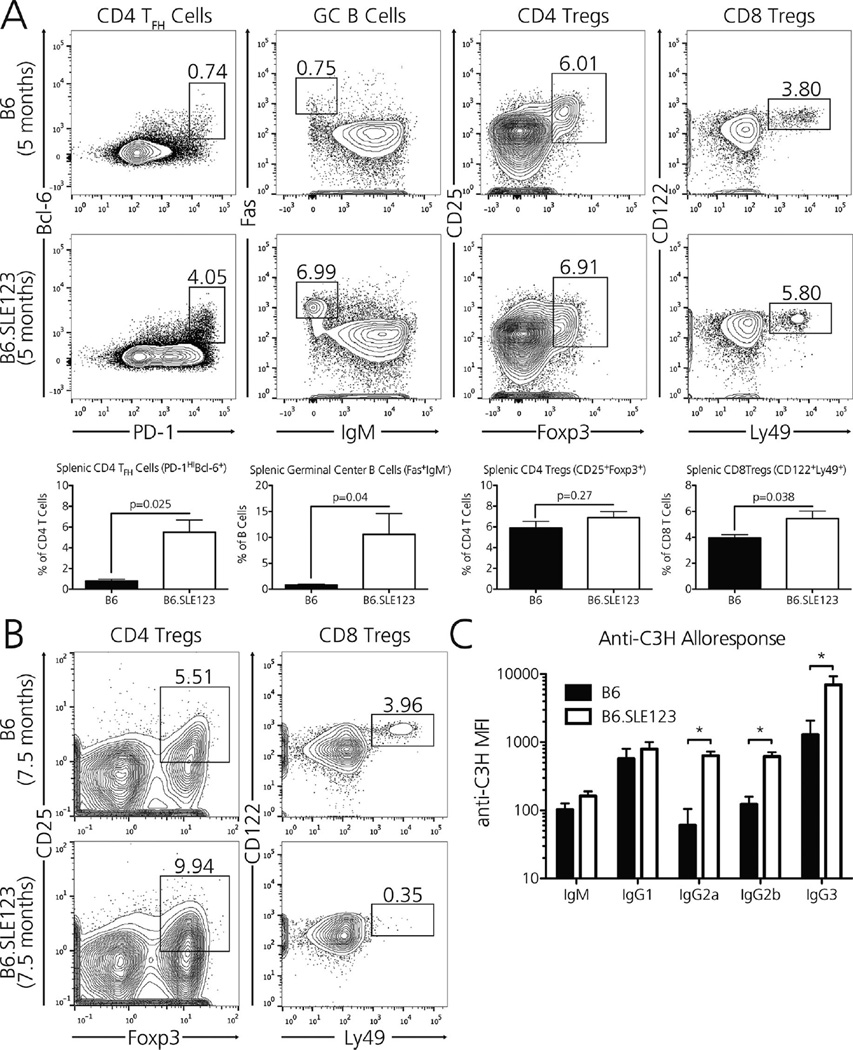Figure 1. Lupus-prone B6.SLE123 mice possess expanded splenic CD4 TFH and GC B cells, fluctuating CD4Treg and CD8Treg populations, and generate an exaggerated alloantibody response.
(A) Five-month-old B6.SLE123 mice have expanded splenic populations of CD4 TFH cells (CD4+ PD-1HIBcl-6+), GC B cells (B220+ Fas+IgM−), CD4Tregs (CD4+ CD25+ Foxp3+), and CD8Tregs (CD8+ CD122+ Ly49+), as observed in the contour plots. (B) Compared with 7.5-month-old B6 mice (top), similarly aged B6.SLE123 mice (bottom) possess an expanded population of splenic CD4Tregs yet completely lack CD8 Tregs, the latter of which may permit unchecked CD4/B cell immunity characteristic of proliferative glomerulonephritis seen in lupus. (C) B6.SLE123 mice (H-2b) generate an exaggerated IgG2a, IgG2b, and IgG3 alloantibody response 14 days after immunization with MHC-mismatched splenocytes from C3H mice (H-2k). N = 5 mice per strain. Significance was determined by Student t-test, *p < 0.05.

